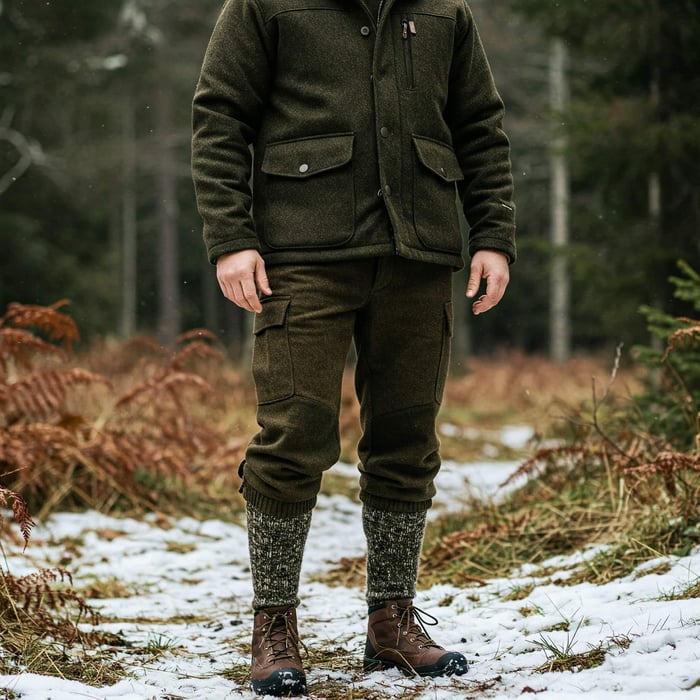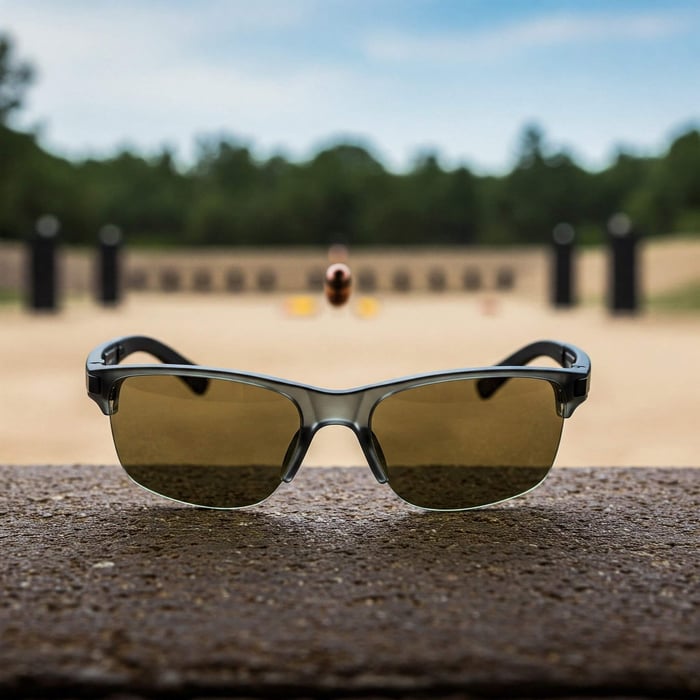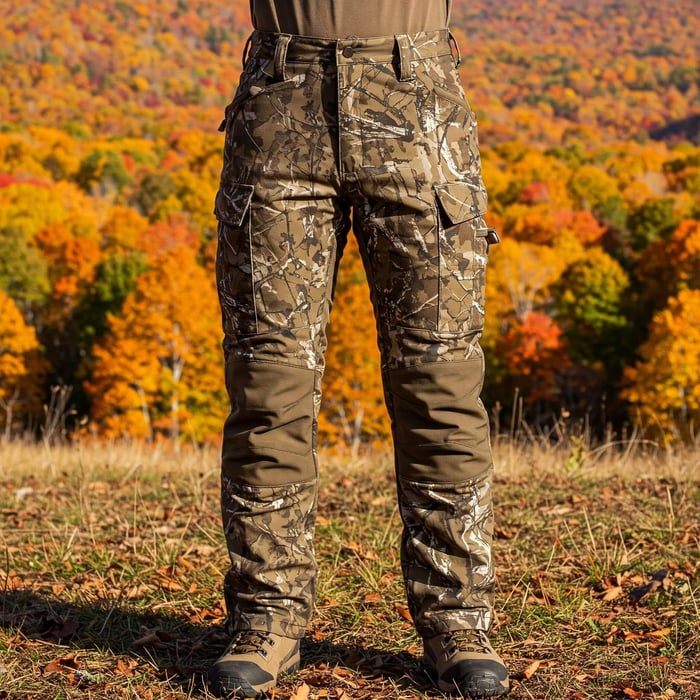Hunting isn’t just about the thrill of the chase—it’s about being prepared, staying comfortable, and blending into the wild. Whether you’re a seasoned hunter or just starting out, one thing’s for sure: your gear can make or break your experience. That’s where wool hunting gear comes in. It’s tough, versatile, and built to handle whatever Mother Nature throws your way. In this article, we’ll explore why wool hunting gear is a game-changer, how it compares to other materials, and how to pick the right pieces for your next adventure.
What Sets Wool Hunting Gear Apart?
When you're in the field, your outfit must serve more than aesthetics. It must warm you, keep you dry, and keep quiet on tough terrain. Wool hunting apparel fulfills all of those requirements and more. Wool has been a proven material for hundreds of years, and contemporary hunters are discovering why it remains one of the greatest options for outdoor equipment.
The Magic of Wool's Natural Properties
So, what's so special about wool hunting gear? First of all, wool is a natural insulator. It warms you up when it's cold but doesn't trap heat when you're moving or the sun breaks out. It's like your clothes have a built-in thermostat. Unlike cotton, which soaks sweat and leaves you feeling soggy, wool draws sweat away from your skin while still maintaining its insulating ability.
Another giant advantage of wool hunting apparel is that it doesn't hold odors. When you're stalking deer or elk, the last thing you need is to smell like your breakfast bacon or yesterday's stench. Wool will naturally hold odors and keep you silent and get you a few more chances at remaining unnoticed. Not to mention, wool is very resistant to wear. It will take a scrape from a tree branch, brush against rocks, and all the abuse of an extended hunt without degrading.
Wool vs. Synthetic Fibers: Who Reigns Supreme?
You may be curious how wool hunting equipment compares to synthetics such as polyester, nylon, or fleece. Synthetics have their advantages—they're generally less expensive, lighter, and sometimes labeled as high-tech. But they don't always perform where it matters. Synthetics tend to be clammy because they're less breathable, making you sweaty on hard hikes or climbs. They also hold onto smells, which can be a giveaway to keen-nosed game.
Conversely, wool hunting gear does have a natural advantage. It's water-repellent to some extent, letting rain or snow shake off without becoming soggy. Even if it does become wet, wool continues to insulate, whereas many synthetics no longer provide warmth when wet. Wool's also environmentally friendly—it's renewable, biodegradable, and doesn't use petroleum like synthetic material does. Although synthetics do have their application, wool hunting gear tends to win out with hunters who prize performance and longevity.
Key Features to Consider When Buying Wool Hunting Gear
All wool hunting gear is not made the same. In order to receive the biggest bang for your buck, you must understand which features are most important. The following is an overview of what to look for when purchasing wool apparel.
Layering for All-Day Comfort
Hunting is about adapting to fluctuating weather—freezing mornings, hot afternoons, and everything in between. That's why layering is so critical, and wool hunting equipment makes it simple. Wool is available in various weights, from lightweight base layers to bulky jackets, so you can develop a system that suits any situation.
A quality wool base layer is your initial defense, staying dry by drawing sweat away from your skin. Mid-layers such as wool sweaters or vests provide warmth without weight, and outer layers such as jackets shield you from wind and rain. Choose wool hunting apparel with a fit that is close but not constricting—you need to have space to move, whether crawling through underbrush or getting into position for a shot.
Stealth and Camouflage
Remaining concealed is a big part of hunting, and wool hunting apparel allows you to blend into your surroundings. A lot of wool items are available in camouflage prints designed for specific landscapes—leafy greens for woods, browns and tans for open plains, or grays for rocky terrain. Wool's natural texture also blunts your edges, making it more difficult for animals to detect you.
And in addition, wool hunting clothing is also whisper-quiet. Synthetic fabric can rustle or crinkle, alerting your prey with each step you take. Wool glides through silently, meaning you can approach your quarry unheard. That's the kind of stealth that might make the difference between bringing down your quarry or returning home on an empty sack.
Built to Last
Hunting is tough on gear. You’re scrambling over rocks, pushing through thorny bushes, and carrying heavy packs. Wool hunting gear is designed to take a beating. Wool fibers are naturally strong, resisting tears and abrasions better than many materials. Some brands even reinforce high-wear areas like elbows, knees, or shoulders with tougher fabrics for extra durability.
When you spend money on wool hunting equipment, you're getting something that will last you for years, not merely one season. That longevity makes it a very intelligent investment for hunters looking for equipment they can count on trip after trip.
Must-Have Types of Wool Hunting Gear
To build a solid hunting outfit, you’ll need a mix of wool hunting gear that covers all the bases. Here’s a look at the essentials every hunter should consider.
Wool Base Layers for a Strong Foundation
Base layers are the quiet heroes of any hunting pack, and wool hunting clothing produces some of the finest. Wool long-sleeved tops, leggings, or even undergarments are light but warm, keeping you cozy from morning till evening. They wicked sweat beautifully, so you remain dry even if you're perspiring from a long trek or nervous anticipation.
Merino wool is especially popular for base layers because it’s softer than traditional wool and less likely to itch. Look for wool hunting gear with flat seams to avoid chafing, especially if you’re wearing it for hours at a time.
Wool Mid-Layers for Extra Warmth
When you require additional insulation, a mid-layer of wool is the ticket. Consider sweaters, vests, or lightweight jackets. Wool hunting equipment in this class is heavier than a base layer but remains breathable, meaning you don't bake in active periods. Most mid-layers feature zippers or buttons for convenient venting, allowing you to cool off without stripping off.
A wool vest is a great middle ground—it keeps your core warm while leaving your arms free for better mobility. Pair it with a base layer and an outer shell, and you’re ready for just about any weather.
Wool Outer Layers for Protection
When the wind blows or the rain begins to fall, a wool outer layer is your best friend. Wool hunting equipment for outerwear consists of jackets, coats, and even pants that are designed to protect you from the elements. Most wool jackets have wind-resistant or water-repellent coatings to enhance their weather-fighting capabilities.
Search for wool hunting clothing with functional details such as deep pockets to stash gear, adjustable hoods for a close fit, or reinforced zippers that don't jam. A quality wool jacket can be a lifesaver on a soggy, cold day in the field.
Wool Accessories to Complete the Kit
Don't cut back on accessories—those are as crucial as your primary layers. Wool hunting accessories such as hats, gloves, scarves, and socks are all made to keep you cozy without compromising on functionality.
A wool hat is ideal for warming your head without sweating, and wool gloves provide you with sufficient dexterity to manage your weapon or equipment. Wool socks are essential for extended days on your feet—they absorb shock, wick away moisture, and warm your toes even in wet boots.
Taking Care of Your Wool Hunting Equipment
Good wool hunting clothing is not inexpensive, so you will want to look after it in order to extend its lifespan. Fortunately, wool is quite low-maintenance if you simply adhere to some easy guidelines.
Washing and Drying Tips
Most wool hunting equipment can be machine washed on a gentle cycle using cold water and a wool or delicates detergent. Hot water or ordinary detergent can shrink the fibers or ruin them, so read the care label. If it is marked "hand wash," don't ignore it—fill a tub with cold water, add a few drops of wool-safe soap, and softly agitate the item about.
For drying, air-drying is your best option. Place your wool hunting equipment flat on a clean towel to preserve its shape. In a bind, some wool pieces can tolerate a low-heat tumble in the dryer, but check the label first to prevent any disasters.
Storing Wool Gear
When hunting season is over, properly store your wool hunting equipment to maintain its top condition. Store it in a cool, dry place to prevent mold or mildew. Wool is a favorite of moths, so add some cedar blocks or lavender sachets to keep them away—avoid mothballs, as they have a funky odor.
Fold your wool items rather than hang them to avoid stretching. If long-term storage, think about a breathable garment bag for added protection.
Wool Hunting Gear for Any Season
The best thing about wool hunting gear is its flexibility. It suits every season, from hot summer nights to icy winter mornings. Here's how to utilize wool throughout the year.
Fall: Layering for Shifting Weather
Fall is prime hunting season for most, with chilly mornings and balmy afternoons. Lightweight wool hunting clothing such as base layers and vests are ideal for layering. Begin with a wool shirt, add a vest for added warmth, and slip on a jacket if the wind blows. Camo patterns in earthy colors such as brown, green, or orange blend beautifully with fall colors.
Wool's ability to breathe is a huge plus in autumn—you remain comfortable whether you're waiting in a blind or hiking through the woods. And its odor resistance allows you to wear it for several days without concern that you'll drive off game.
Winter: Staying Warm in the Cold
Winter hunting requires heavy equipment, and wool hunting equipment gets the job done. Heavy wool jackets, insulated trousers, and warm socks keep you warm when it gets cold. Wool's insulating properties even when wet are a blessing if you're hunting in snow, sleet, or wet terrain.
Layering is still key in winter. Pair a wool base layer with a sweater and a weatherproof wool coat for maximum warmth. Don’t forget accessories—a wool hat and gloves can make a huge difference when you’re out in the cold for hours.
Spring and Early Season: Lightweight and Flexible
Spring and early-season hunts tend to involve milder temperatures, but rain and wetness can still be a problem. Opt for lighter wool hunting wear to prevent overheating. A light wool base layer complemented by a vest or light jacket provides you with flexibility, and the moisture-wicking capabilities of wool keep you dry in spring rain showers.
Early mornings may still be cold, so a wool hat or scarf is useful for staying cozy until things heat up. Use camo patterns that coordinate with the greener, leafier environment of spring.
Reviewing Top Wool Hunting Gear Brands
With all the brands out there making wool hunting gear, it can be difficult to know where to begin. Here's a brief rundown of three brands that are well-known for quality and performance.
Brand A: Tough and Trustworthy
Brand A is a top choice among hunters who require wool hunting clothing that will withstand harsh use. Their merino wool base layers are comfortable and warm, and their jackets are designed for rough terrain. Prices are modest, making Brand A an excellent choice for hunters who desire quality without overspending.
Brand B: Top-Tier Comfort
If you’re after premium wool hunting gear, Brand B is worth checking out. They use high-end wool blends that feel amazing against the skin, with thoughtful touches like extra pockets and durable zippers. Their gear costs more, but the comfort and longevity make it a worthwhile splurge for dedicated hunters.
Brand C: Affordable and Functional
For frugal hunters, Brand C provides good wool hunting equipment at affordable prices. Their base layers and socks are particularly well-liked, offering consistent warmth and durability for casual or occasional hunting. You may not receive all the bells and whistles, but you'll still receive equipment that does the trick.
Where to Find the Best Wool Hunting Gear
Ready to take your kit to the next level? You can get wool hunting equipment at a variety of online and brick-and-mortar locations. Outdoor stores such as Cabela's, Bass Pro Shops, or REI carry extensive lines, with knowledgeable staff to assist you in selecting the proper fit. Giant online retailers such as Amazon provide numerous selections, along with customer reviews from fellow hunters to help inform your decision.
Many brands also sell directly through their websites, sometimes with exclusive colors or discounts. Keep an eye out for sales, especially around hunting season or holidays like Black Friday. And always check the return policy—since fit is so important, you’ll want the option to swap sizes if needed.
Wrapping Up: Why Wool Hunting Gear Is Worth It
When hunting, your equipment is your best friend. Wool hunting equipment provides an unbeatable combination of warmth, durability, and camouflage, making it an excellent choice for hunters who wish to remain comfortable and effective in the woods. From base layer to jacket to sock, wool is ready for anything—whether it's a cold morning dawn, a wet afternoon, or a long hike through rough country.
By investing in high-quality wool hunting gear, you're investing in better hunts and better memories. It's gear that works as hard as you do, season after season. So the next time you're getting ready, make wool your go-to, and get ready to take on the wild with confidence. Happy hunting!





